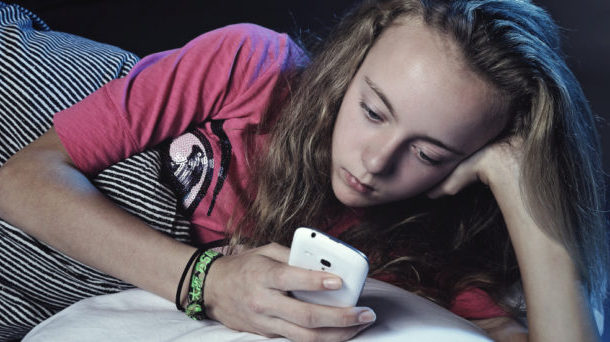Does too much social media damage young girls?

In December, British Health Secretary Jeremy Hunt warned Facebook to ‘stay away from my kids’ after it launched a messenger service aimed at under 13s, and in February, the House of Commons Science and Technology Select Committee launched a new inquiry to examine the health risks to children and young teens of increasing amounts of time on social media.
For tweens and early teens, the rise in time spent on Snapchat, WhatsApp and other social media is really quite dramatic. Our new study set out to look at patterns of behavior among 10-15-year-olds in the UK, and their levels of well-being, to see if all this time spent online was having a detrimental impact on their mental health.
We found that teenage girls are by far the highest users of social media, and those who are using it for more than an hour a day also have more well-being problems in later teen years.
We used the youth participants’ data from the UK household longitudinal study, Understanding Society, following almost 10,000 young people from diverse backgrounds, across the whole country, over 5 years.
Ten percent of ten-year-old girls reported spending one to three hours a day, compared with 7 percent of boys, and this increased to 43 percent of girls at age 15 as opposed to 31 percent of boys.
We asked the young people to report on how much time they spent on social media on a ‘normal school day.’ A few reported no internet access or no time spent at all, but some were on it four hours or more. Ten percent of ten-year-old girls reported spending one to three hours a day compared with 7 percent of boys and this increased to 43 percent of girls at age 15 and 31 percent of boys.
Two measures of well-being were assessed for these young people. The first was a combined score of questions that asked about satisfaction with schoolwork, friends, family, appearance, school and life as a whole. The second measure was based on a well-established questionnaire which asked the young people about their social and emotional difficulties.
At age 10, girls who interacted on social media for an hour or more on a school day had worse levels of well-being compared to girls who had lower levels of social media interaction. Additionally, these girls with higher social media interaction at age 10 were more likely to experience more social and emotional difficulties as they got older.
For both boys and girls, levels of happiness decreased between the ages of 10 and 15, but the decrease among girls was greater than that of boys.
What makes girls different?
Girls may participate in more comparisons of their own lives with those of the people they are friends with or follow. Viewing filtered or photo-shopped images and mostly positive posts may lead to feelings of inadequacy and poorer well-being.
Girls may also feel more pressure to develop and maintain a social media presence than boys. Social media presence requires constant updating and having friends share or like their content. If their perceived popularity decreases over time, there may be a resultant increase in social and emotional difficulties.
Boys, on the other hand, are much more likely to participate in gaming than social media, which is not covered by our study. Thus boys’ levels of well-being may be more related to their gaming and skill level.
What can we do?
So what can be done to help protect young people from the potential damage to their mental health? Social media interaction does not appear to be a short-lived phenomenon.
The recent Children’s Commissioner for England’s report, Life in Likes, suggests imploring social media platforms to check underage use and better preparing children for life in a digital age.
The recommendations did not discuss potential gender differences, but the findings from our study suggest that boys and girls can have different emotional and well-being responses to high levels of social media interaction.
There have also been calls for the technology industry to look at built-in time limits. Our study really backs this up – increasing time online is strongly associated with a decline in well-being in young people, especially girls.
Young people need access to the internet for homework, for watching TV and to keep in touch with their friends, of course, but do they really need to spend one, two, three or four hours chatting, sharing and comparing on social media every school day?
Dr. Cara Booker is a social epidemiologist at the University of Essex in Great Britain. Her research focuses on the social determinants of health and well-being of adolescents and young people.















Amelia
March 29, 2018 at 12:51 pm
I think too much social media – and blanket immersion in mobile phones – is damaging everyone. Not having a phone is like being the one sober girl at a party, you see everyone behaving in this really weird way but they don’t notice because they’re all doing it.
Everyone’s walking down the street, pecking at their little rectangle, they don’t notice the world around them or other people at all. I see couples sitting together, with eyes only on their phones, I see my friends doing things merely to photograph them and put them up on Instagram or Snapchat rather than to actually experience the thing itself.
The smart phone has taken over our brains and it’s sad this incredible power to contact pretty much anyone else on the planet at any time and carrying more computing power in your pocket than the Apollo programme had gets used to send emojys and bully pre-teens.